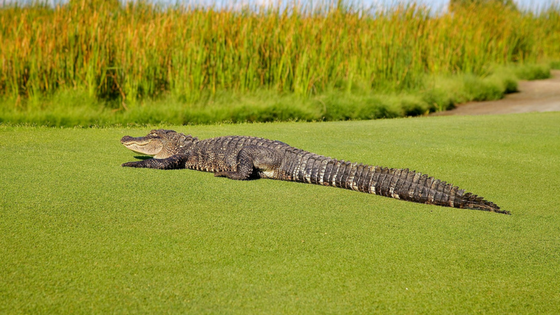Golf courses serve a variety of purposes in terms of patience, relaxation, and communal enjoyment. However, outside of the game they mutually facilitate, courses stand as a hotbed for various wildlife, ranging from birds to reptiles. It is barely uncommon to play a round of golf without encountering one of these creatures.
Wildlife make up an important part of golf course culture and ecology. Here are some tips and insights for better understanding this natural asset to your playing experience.
Maintaining a safe “haven”
Golf courses stand as an excellent resource for wildlife conservation. According to National Geographic, courses in the United States alone can act as “havens” for animals displaced by urban development. These species include a variety of salamanders, which, in themselves, “play a major role in food chains” and act as a potential asset for wildlife researchers studying surrounding habitats.
As you enter your next tee time, keep in mind that you are also entering the domain of a slew of different creatures–some that depend on your playing terrain for survival. With this notion in mind, always be sure you are treating the course–and the creatures themselves–with respect.
Understanding the playing environment
Whether you are a golfer or a golf course employee, preparation is the name of the game where wildlife is concerned. These preparations are mostly dependent on one important variable: the course’s unique environment.
For course designers and officials, a major rule of thumb is to establish “out of play” zones that may otherwise impede or interrupt pre-established wildlife sanctuaries. This approach provides a healthy equilibrium between golfers and wildlife. As far as fostering new wildlife culture on a course, Grounds Maintenance suggests installing songbird houses as an “easy first step.”
As for players, a course’s environmental characteristics can impact how an upcoming game will be approached. For example, if your next game is set to take place on a wetlands-dominated course, you will want to approach the game with extra regard for the potential fragility of your surroundings.
Knowing how to handle dangerous or bothersome animals
For players, most golf-related wildlife encounters are pleasant, and they usually provide an added element of organic scenery. However, it is important to understand that courses have been found to attract potentially dangerous species that, if mishandled or provoked, could pose a threat to you and your golfing entourage. These creatures may include bees, coyotes, poisonous snakes, and in some states, alligators.
Additionally, while golf is a game grounded in mutual respect and focus, some creatures will not be sympathetic to these values and interrupt your shot. Sergio Garcia, for instance, once encountered a ground hive of angry bees during the Accenture Match Play Championships, opting to take a free drop to avoid being stung.
If you find yourself obstructed by a dangerous or otherwise intrusive creature, the handling of this shot is ultimately dependent on the situation, according to PGA.com, but PGA rules allow endangered players to take a drop shot within a club’s length of the original spot. These rules also apply to other natural hazards like poison ivy and cacti.
Regardless of the scenario, make sure you are valuing personal safety over scores.

